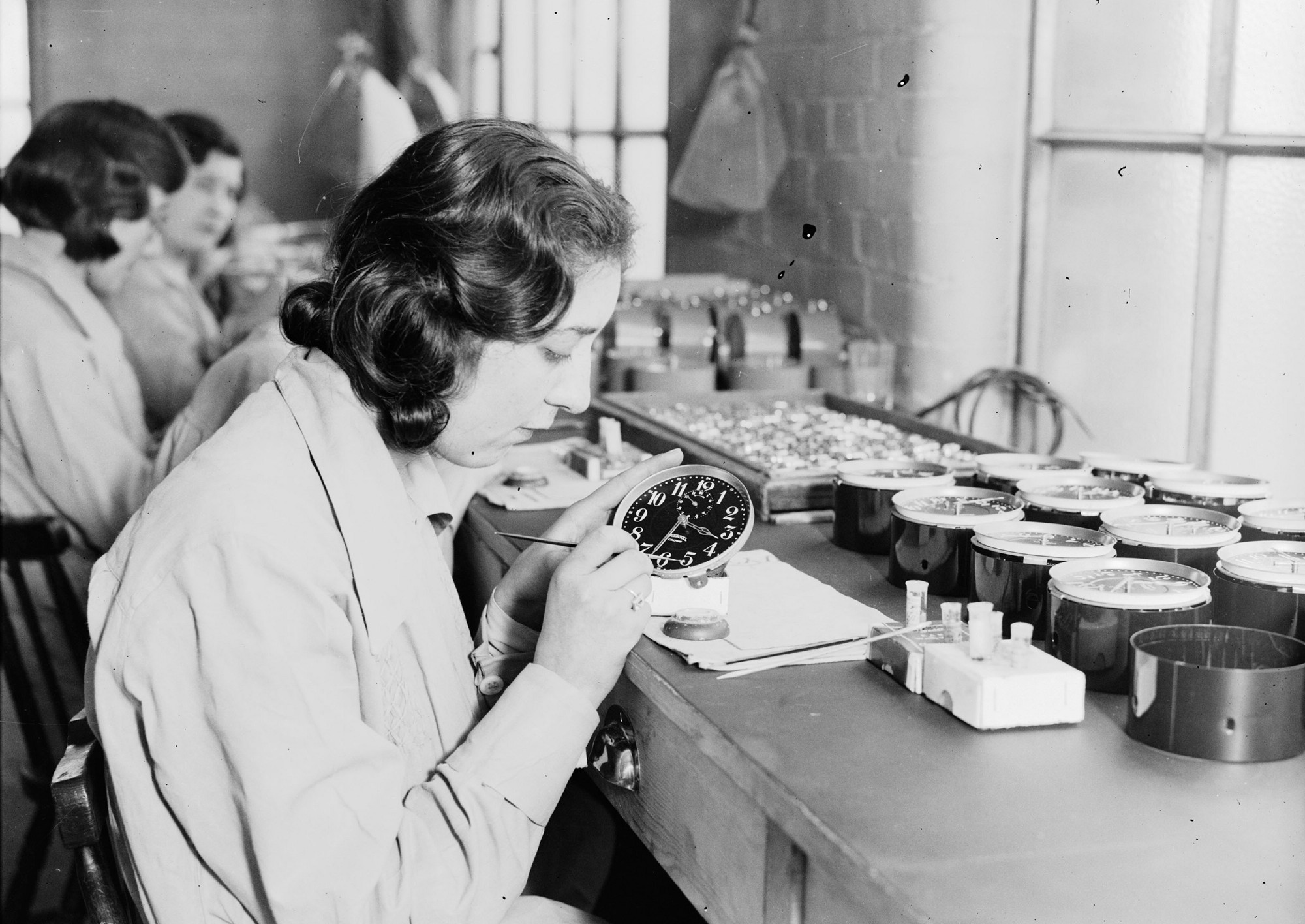
Sisters Albina Maggia Larice, Amelie Mollie Maggia and Quinta Maggia Mcdonald , Edna Bolz Hussman, Eleanor Ella Eckert, Genevieve Smith and her sister Josephine Smith, Grace Fryer, Hazel Vincent Kuser, Helen Quinlan, Irene Corby la Porte, Irene Rudolph, Jane Jennie Stocker, Katherine Schaub, Mae Cubberley Canfield, Marguerite Carlough and her sister Sarah Carlough Maillefer in Newark and Orange, New Jersey, USA. Catherine Wolfe Donohue, Charlotte Nevins Purcell, sisters Frances Glacinski O’Connell and Marguerite Glacinski, Helen Munch, Inez Corcoran Vallat, Margaret Peg Looney, Marie Becker Rossiter, Mary Duffy Robinson, Mary Ellen Ella Cruse, Mary Vicini Tonielli, Olive West Witt and Pearl Payne in Ottawa, Illinois, USA.
Learn and Remember these names. The women above worked in the first case for a company called the United States Radium Corporation and in the second case at Radium Dial. As working class girls and women during the 1910s and 1920s they joined a new bustling form of work , fashionable and better paid than anything else. Painting the dials of watches so they would glow in the dark for soldiers during the war then after for consumers. They shone and glowed themselves. They were the Radium Girls and they were doomed.

The Glowing Century
Kate Moore’s book Radium Girls: The Dark Story of America’s Shining Women is an essential read. In it she has helped give the women she discusses peace by acknowledging not just their lasting impact on science, our knowledge of radioactivity and occupational hazards ,but the lives they lived before they were let down by companies more concerned with the biggest profits possible from the new wonder material Radium.
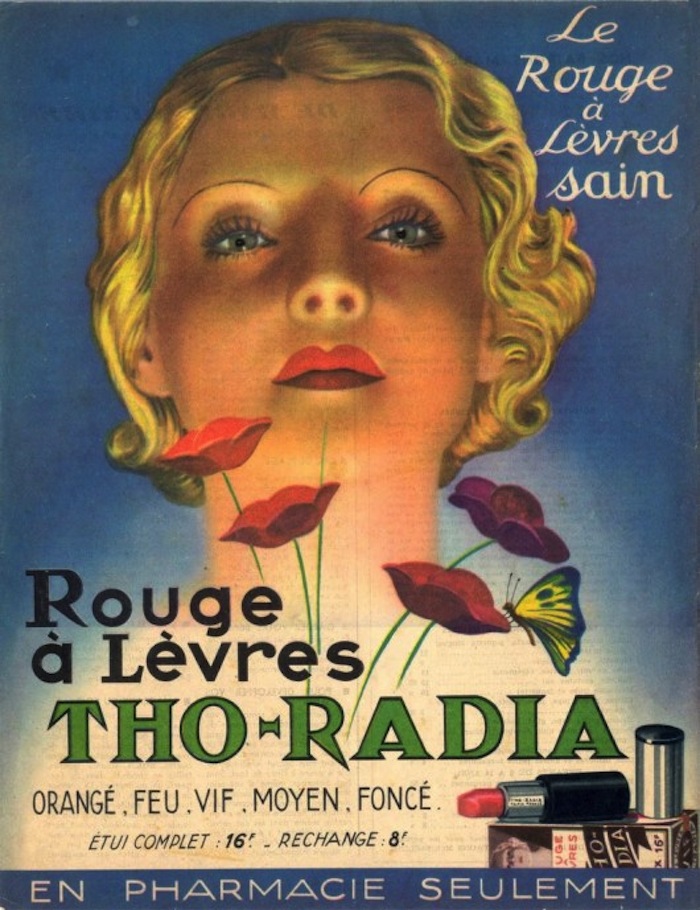
The 1910s-1930s were not black and white or sepia wholly. No. Instead they should be viewed as being a bright green as a new element on the block was colouring the world. Radium was discovered by Marie and Pierre Curie in 1898 before being isolated in 1910. Around this time a young doctor spent time learning within their laboratory by the name of Sabin Von Sochocky. With his co-founder George Willis he later used the new element to create Radium paint. Radium as Moore notes was a luxury item sold by the gram for $120,000 then or $2.2 Million in modern currency. Using Radium powder dabbed with water and gum arabic a greenish white luminous paint could be created ,which went under the name Undark, and was declared the “Greatest find of history”. One could buy many items with, or claiming to have, Radium such as butter, lingerie, milk, toothpaste, soap, rouge, bug killer or even drinks called Liquid Sunshine which the rich could afford and led to those like one aficionado saying: “I can feel the sprinkles inside my anatomy”. With its use in the treatment of Cancers it seemed like Radium was a cure for everything and anything. The sensation spread to culture with songs like Radium Dance in the musical Piff Paff Pouf becoming huge hits.In the mid 1910s and 1922 two different Radium corporations started hiring young women and teenagers for the delicate work of dial painting with the wonder material.
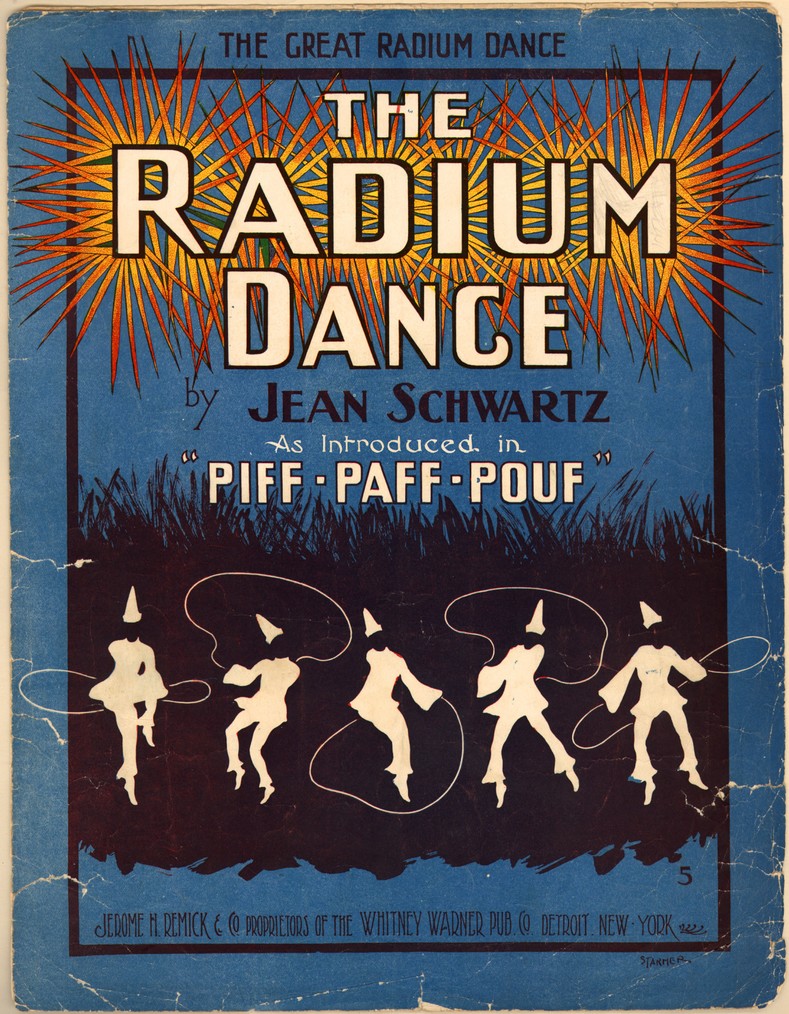
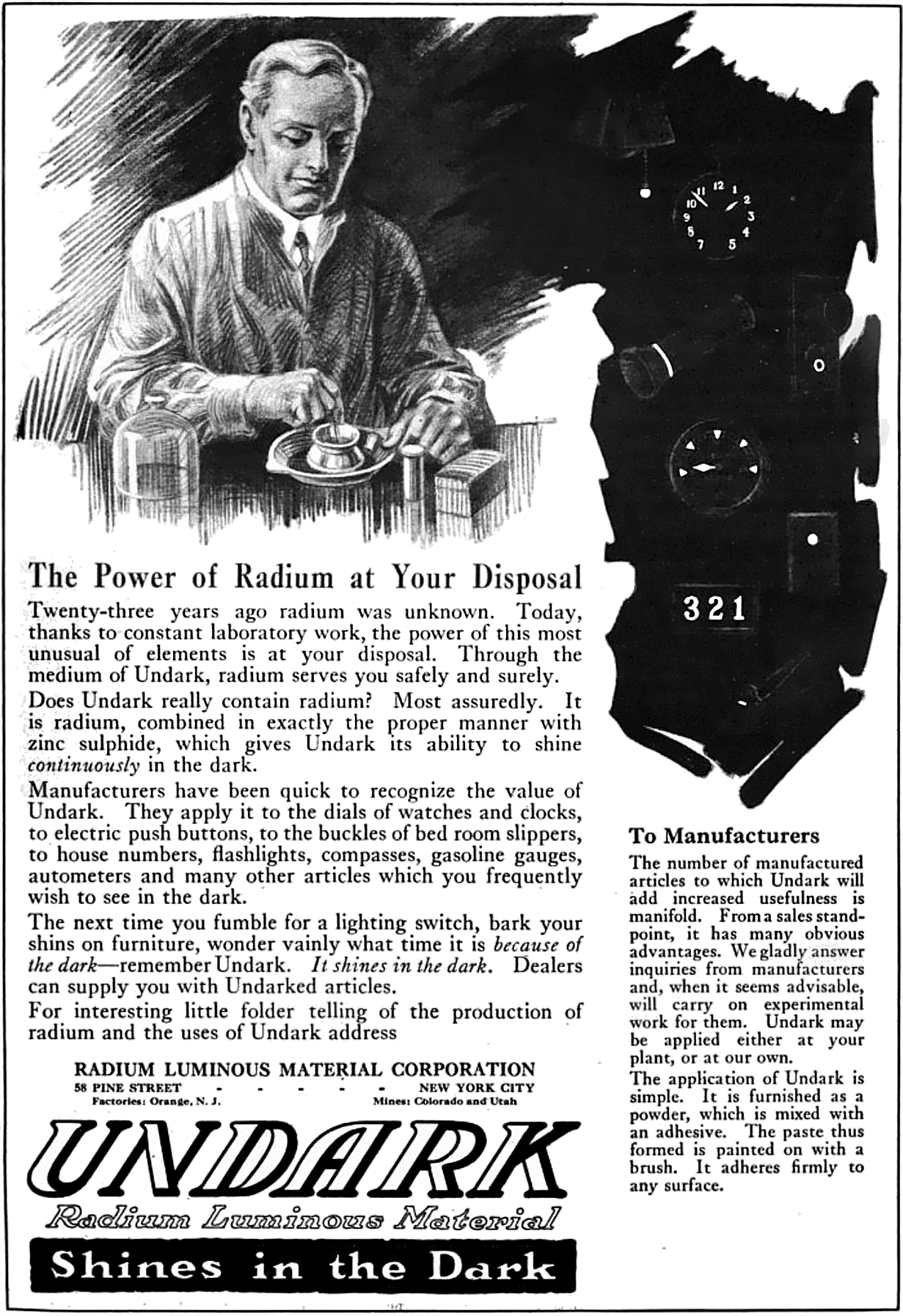
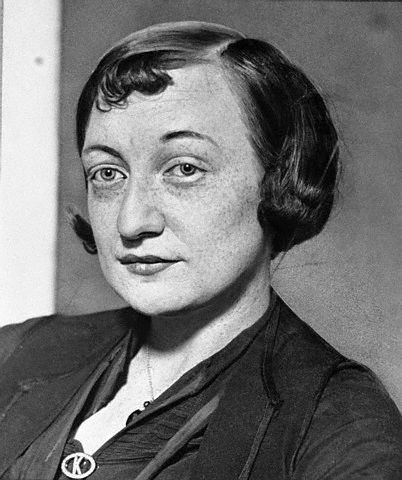
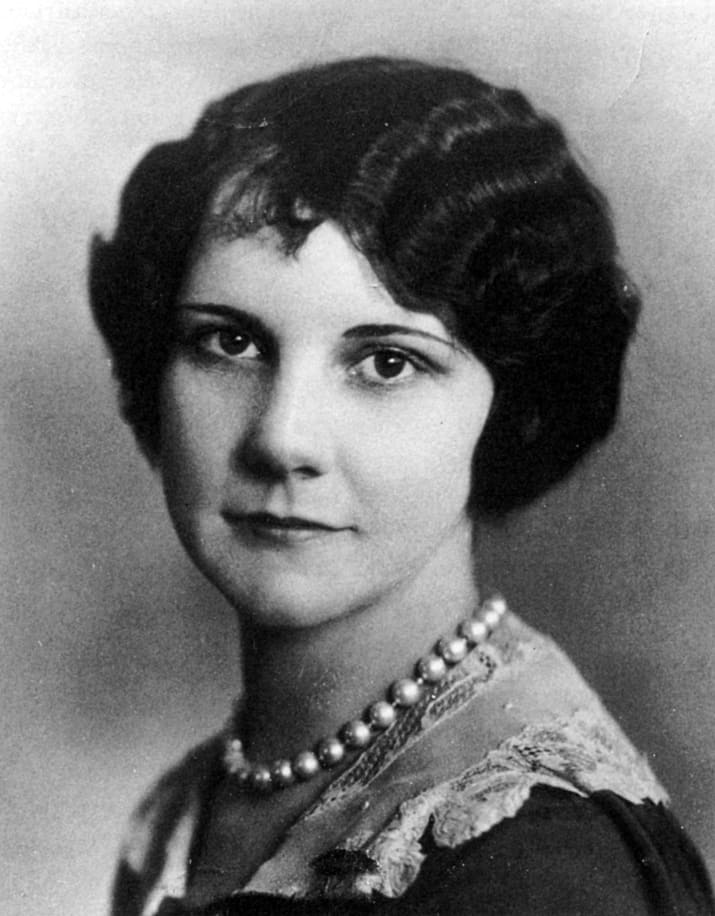
Radium Girls, Dial Painters and New Women
Unlike in Europe ,where different implements like glass rods were used to paint with Radium, in these American studios of chatting and hard-working girls like Katherine Schaub and Grace Fryer, fine brushes sometimes of only a millimetre thickness were used instead. To keep them even slighter thus saving the expensive paint from being wasted and ensuring the dials were painted perfectly a work practice arose in which girls would, when need be, lick and draw their brush bristles to a tiny point. It had a “gritty taste” in the mouth as one of the USRC painters said.
Those like the trainer Mae Cubberley upon starting in 1916 had their inquiry about the “leery” practise being dangerous answered with a confident assurance that it was safe and might even benefit them. Additionally, the girls were paid piecework with each watch equalling 1.5 cent and consequently multiple trays of watches painted could earn the girls more than their fathers did annually: $2080 or $40,000 in today’s money. The safety and drive to earn thus made lip pointing ever-present.
The girls often glowed with “luminous paint” long after work, Katherine Schaub noted, but others even decorated with it as it was supposedly safe. One Newark and Orange studio “lively Italian girl” painted her teeth before a date to “knock him dead” while later in Ottawa under Radium Dial, Peggy Looney took home bits of powder to paint glow in the dark moustaches on herself and her siblings’ faces leading to laughter and awe. While Pierre Curie had said he would not trust himself in a room with a kilo of Radium and Sochocky, their boss, in 1912, argued it could only be handled with “the greatest precautions” the girls were covered in it daily.
Following the war, the first chapter notes, a larger studio and offices for USRC opened up in Orange, New Jersey. The company continued to grow following the war with the painters tripling from 70 at Newark to hundreds at Orange. Newcomers included Albina Maggia and Amelia or Mollie, Sarah Maillefer. People also left for jobs or marriage such as in the case of Mae Cubberley, Grace Fryer, Irene Corby, Vincent la Porte. In 1920 the jobs dropped to 100 and became increasingly part-time with the Smith and Carlough sisters alongside Mollie Maggie still working there. In 1921 Sochocky wrote for American Magazine saying although Radium was “the greatest force the world knows” and “to us today” a “great romance” what it would “mean to us tomorrow no man can foretell”. Sochocky was fired in 1922 for Arthur Roeder and even now his words are haunting.
From 1919 to 1921 the first symptoms started to emerge within the women and girls. Katherine Schaub felt stiff and sore in her legs, Marguerite Carlough felt tired constantly, Hazel Vincent became ill with her weight dropping and her jaw aching and Albina Maggia met a man, but felt ancient via arthritic pains despite her twenty-five years.
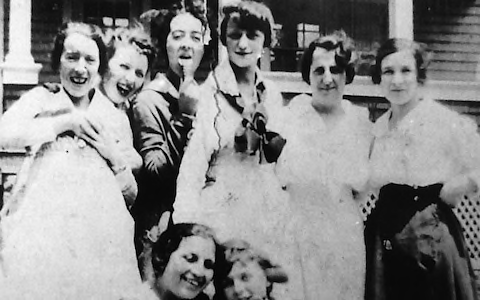
Her sister Mollie was still working though. She was also the first to die. It began with tooth aches leading her to seek help from a Dr. Knef in October 1921 due to the agonising pain, but previous appointments and those with him made her teeth and gums worse instead of curing it. Knef wondered if it was an inflammatory disease of the gums noting she was becoming “steadily worse” via treatments. Where teeth were removed the holes became infectious and ulcerous. The nurse Edith Mead who she boarded with had never seen such a condition in her life. She was tested for Syphilis in 1922, but negative results returned and Knef started to consider whether an occupational disease like Phosphorus poisoning which involved Phossyjaw was the culprit. Unable to secure any of the top secret ingredients of Undark to confirm his suspicions he continued to test her with nothing becoming clear. In Autumn she became housebound with her jaw, roof of the mouth and bones slowly turning into a huge abscess. Around then a positive result for Syphilis came back. In September Mollie’s throat was finally reached by the necrosis and she died due to a haemorrhage that Edith couldn’t staunch on the 12th of September. Quinta said she had a “painful and terrible death”. She was only 24. She was buried with the shameful secret of Syphilis dwelling in her parent’s thoughts, but atleast she could rest in peace without the agony she had suffered, they believed.
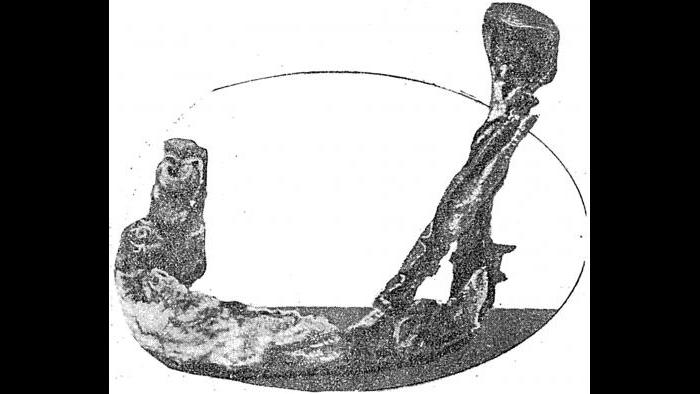
Two days after the funeral in Ottawa Illinois which was 800 miles away a newspaper advert appeared asking for girls 18 or over to dial paint in tiny Ottawa near Chicago. The company was Radium Dial run by president Joseph Kelly with a Miss Murray acted as superintendent choosing girls for the job. Catherine Wolfe ,19, and an orphan alongside underage girls like 16-year-old Charlotte Nevins and 13-year-old Mary Vicini started there. The instructress Mercy Reed ate the Radium with a spatula in front of the girls to show it was harmless with Nevins saying she’d been told it “would never hurt me”.
The remainder of the first part of the book follows Moore’s research into how the women in New Jersey, their doctors and other professionals slowly learnt what was developing within the bones and bodies of the dial painters leading to failing attempts at litigation all the while the girls working in Ottawa went on oblivious to what awaited themselves down the line.
The Proof in the Breath
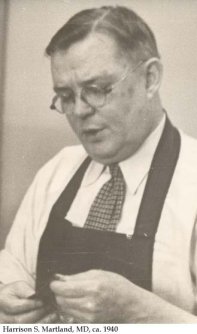
Change came on the 21st of May, 1925 with the County Physician of Essex County, including Newark and Orange, dying. The new official was Harrison Martland who first heard of the Radium poisoning upon the death of Dr. Leman, chief chemist at USRC, who died of Pernicious Anaemia. Martland alongside Sochocky and USRC found that his bones when reduced to ash and tested with an electrometer held significant radiation. Medical history was made as this had never been tested in a human body.
Working with those like Sochocky, Martland found a way to test it in living people. Sarah Carlough who had been visiting her sister Marguerite, with her own limp and yet undiagnosed symptoms she was barely functioning with, but ignoring, met the men and had the news broke to her that her symptoms were caused by the same condition as her sister and many others in the form of poisoning by Radium. She quickly broke down physically upon hearing this and was admitted that day. Soon she became the first Radium girl to be tested with this procedure. First she was sat before an electroscope which read her gamma radiation then another test called the expired air method was done with Sarah blowing air into bottles joined to the electroscope which showed the amount of radon in the breath. A normal leak above her should have been 10 subdivisions in 60 minutes, but instead it was 14 and when she did the second test her breath should have measured 5 subdivisions of radon in 30 minutes, but was 3 times the size at 15.4. Sarah made history proving even when alive that the women’s work had poisoned every breath they took, but sadly she died within the week of her illness. The news of the test and evidence made the New York Times.
Those at USRC tried to claim that there was no chance Radium could have impacted Leman who handled it in larger amounts the same way it did the women handling trace amounts. However as Mackland team made clear 180 micrograms was enough to cause Sarah’s foot to become 4cm shorter than the right and do things like turn her bone marrow dark red instead of fatty yellow and normal. This was because although gamma radiation could permeate easier than alpha radiation in the case of those handling Radium they were ingesting the latter in their work therefore taking a much more radioactive form of radiation into their system. It didn’t matter how little they ingested instead it mattered that they did at all. Following these tests interest in the results occurred from those working for the company like Dr. Flinn, but also others like the Drinkers who had their report misrepresented by USRC. They finally published their full report in August 1925 ignoring the possibility of being sued by the Radium company. Andrew McBride of the Department of Labour also visited and criticized the fact safety advice given by the Drinkers had been disregarded as impractical saying: “human life is far too important to be neglected[…]if it is possible to conserve it”.
Attempts at litigation for those like the Carlough sisters and Hazel Kuser became stronger in light of this. Katherine Wiley of the Consumer League who had been helping the women in the beginning suggested they see Martland. So it was they all visited him and finally had the news broke to them that they had Radium poisoning from their job which was incurable and would kill them. Katherine Schaub knew although this was horrible news it meant they had evidence for a lawsuit. They had hope.
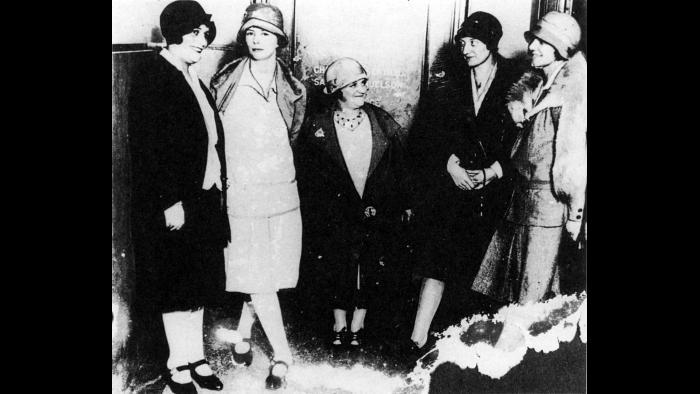
The Fight
In part 2 Kate Moore thus goes on to look at how the New Jersey Radium Girls attempted to win compensation, support and the admittance of guilt from USRC. At first none of the girls could find lawyers willing to take such a one-sided case with the statute of limitations passed for all but Marguerite. Katherine and Martland around this time composed a list that would later be named The List of the Doomed with Katherine helping add 50 former co-workers including the women involved in fighting for justice. Each death would be marked against a name with a red D for Death. In December 195 Martland published findings from his study with Dr. Conlon and Dr. Knef discussing the new “unrecognized form of occupational poisoning”. It was laughed at by pro-Radium figures while Martland despaired over the still present inability get help and cash for the ‘disabled, death facing girls’ in the light of this. Marguerite Carlough finally joined her sister Sarah on Boxing Day 1925 at 3am. It was then that the lawsuit of the sisters and Hazel Kuser was won, but due to the Lawyer Mr. Kalitsch’s 45% payment fee and debts to be paid those like Hazel’s husband Theo only received under half of the 1000 dollars or 13,408 dollars given. Grace Fryer tried to bring a claim for a modest $5000 or $67000 today to pay her own bills and fees with a lawyer Gottfriend, but the company’s own legislative representation Styker told him he would not advice his bosses to do it. It took until 1927 for the women to finally receive adequate representation. The junior Lawyer Raymond Berry agreed to take the case of the women and their husbands like Quinta’s husband James McDonald who had lost “the services of his wife” and would be “deprived of the comfort and aid of her society” in future. A case date was set for January 12th 1928 and in the lead up Mollie’s bones were dug up the previous October finding no syphilis, but proof of radiation while news figures like Walter Lippmann came out in support of the girls. That January many media figures and the public turned out in sympathy for the Radium Girls at the Court of Chancery. The Company Lawyer Markeley questioned the credentials of every expert and witness while journalists were amazed by Grace Fryer who “can tell you of the deaths without a flicker of eyelash” and demonstrated the lip-pointing process to the court. Tears flowed throughout the room as she discussed her manifold injuries then testimony on behalf of the women was closed until april 25th when many could be death. Katherine was next to give testimony while Markeley was enraged to be unable to strike of the evidence of Mollie’s autopsy which confirmed radiation as cause of death. It was hard for Katherine who said “ I thought it would never end[…] this excruciating horrible testimony” ,but that it had to be done “or else how would we be able to fight for the justice that was due us”. Martland was the star witness confirming the Carlough sisters’ autopsies as showing the same poisoning. He also brought up the USRC’s Waterbury company cases that had been hid.
With everyone from Lippmann to Norman Thomas, a prominent socialist politician, to individuals from around the world who wrote to them, offering support and belief in the women’s cause a sudden settlement occurred in May after Berry’s mentor William Clark suggested it. The women after rejecting the first offer received a second one they accepted.
They would receive 10,000 each with pension of 600 or 8316 a year for life as well as past and future medical expenses alongside court costs all being paid. Three sets of doctors choose by first the women, secondly the company and lastly a combination of both would oversee the women’s health. Berry believed the matter was not over.
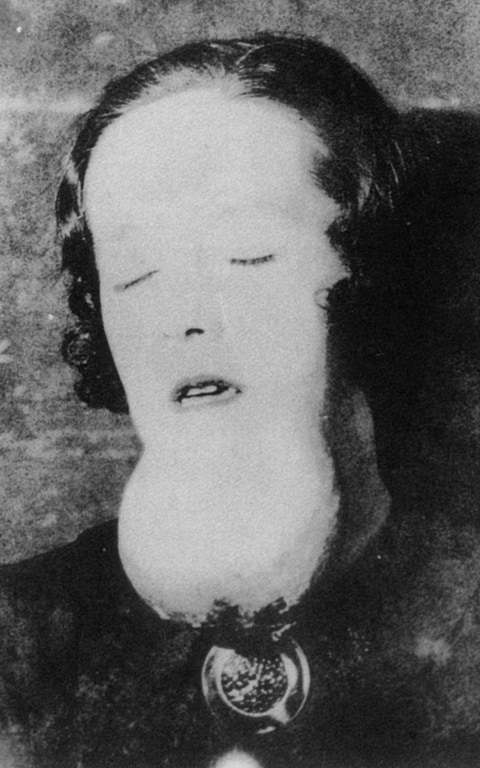
At this time Sochocky and Martland found two sorts of cases existed in the New Jersey girls due to the mesothorium present in the USRC form of Radium with those who died earlier affected by that combining with Radium to cause severe anemia and jaw necrosis while latter cases it would become clear , acted different due to the Mesothorium degrading quick and thus these cases often presented as sarcomas. While conferences of all the New Jersey experts like Hamilton, Wiley, Roach and Martland occurred that winter in 1928 trouble was brewing. By 1929 Katherine was pressured by dr. Craver to change her money to one lump sum as the company had expected their deaths to happen quick. Berry also found that they refused to admit it was Radium poisoning for future lawsuits. Their victory was one of the short term it seemed. When Quinta McDonald died of a sarcoma in December 1929 it became clear presentation of their poisoning was changing. Irene la Porte also developed the same and died in 1931 a month after filing claims with her husband Vincent. Berry managed to secure Mae Cubberley $8000 or modern day $113,541 in compensation, but was barred from future cases. They were without future representation.
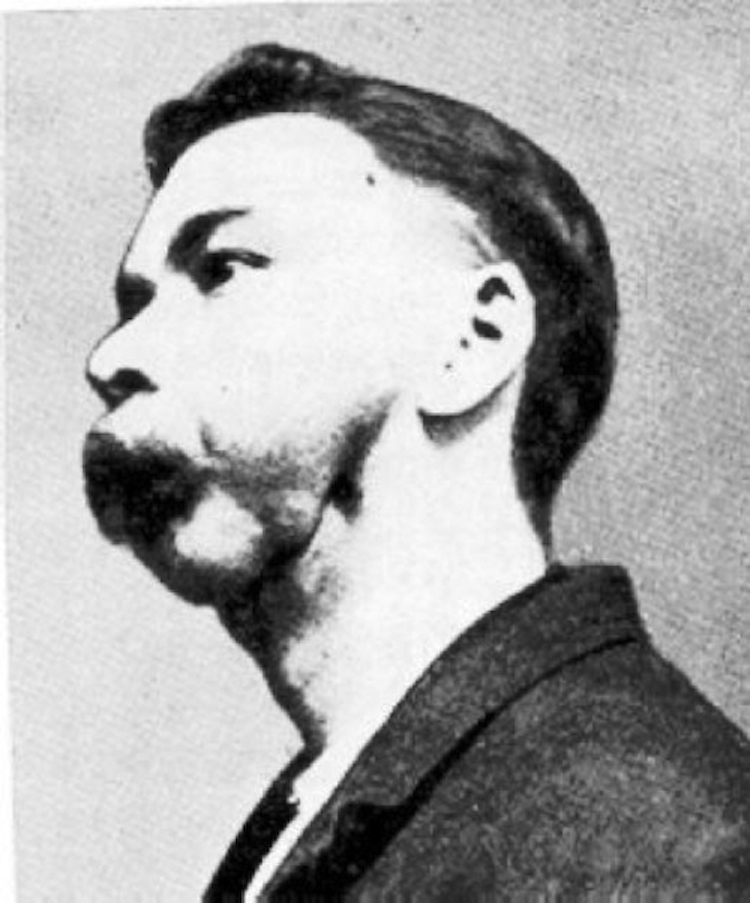
Around this point in 1932 on the 30th of March the industrialist playboy Eben Byers died of acute radiation poisoning due to his belief it aided his health. He gave evidence to the Federation Trade Commission that Radithor had killed him. The Food and Drug Administration consequently made Radium illegal as a medicine while the American Medical Association removed it as a remedy too. A wealthy male consumer had made officials in power see sense not the multiple cases of female workers from poorer backgrounds. The Radium business soon collapsed in New Jersey with the Orange Plant raised in 1933. Katherine Schaub and Grace died on the 18th of February and 27th of October respectively. The women would finally gain lasting justice through those who took up Grace and the other women’s torch in Ottawa such as Catherine Donohue.
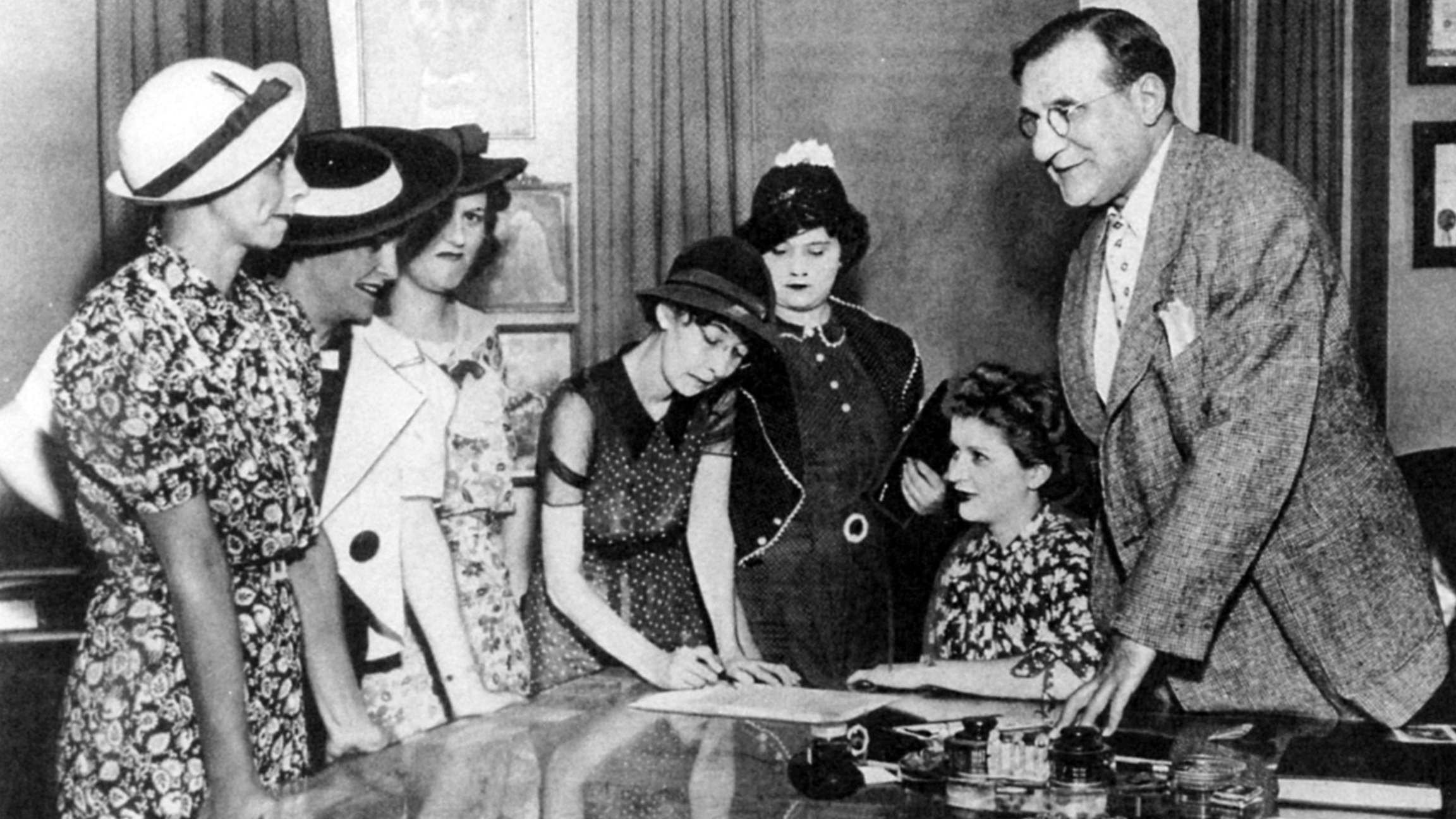
Justice Finally
In Moore’s third chapter it is shown how the Ottawa women fought and finally won for all Radium Girls. In 1928 June when the New Jersey cases came to public attention those at Radium Dial in Ottawa reasserted the safety of their Radium which was pure and didn’t use mesothorium taking tests of the girls still working for them to prove this claiming unlike girls such as Ella Cruse, Peg Looney or Inez Corcoran they were healthy. The insular catholic community’s character meant it took until 1934 for any litigation to begin. The Chicago laywer Jay Cook represented them for nothing. One of the women who joined the case was Pearl Payne who was ill despite only working for eight months in the 1920s. She wrote to her husband on her supposed deathbed that “ I love you and I am laying here thinking of you and wishing I was in your dear arms….I have loved you very deeply and dearly…be good to our baby girl. Teach her to love and remember me.”
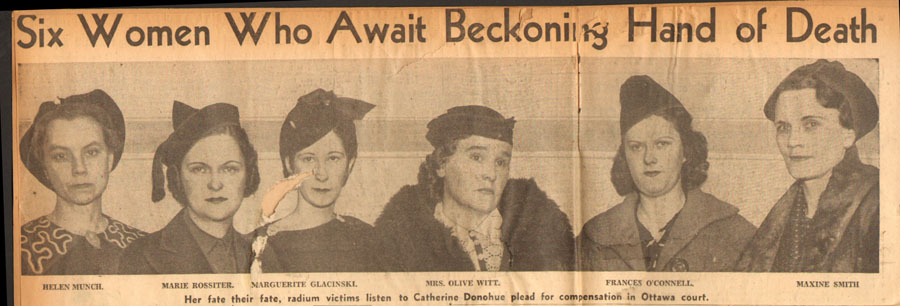
Around this time the chaos caused the former President Kelly of Radium Dial to be kicked out in favour of William Ganley. He opened an almost identical Radium dial company in the same time publishing its lack of dial painting. Two claims were brought by Cook, Moore notes, first within the Law Court and secondly within the Illinois Industrial Commission. Inez was the lead case for the former as she was, Catherine Donohue noted, a living corpse by this point. The case however was lost due to problems like the statute of limitations loopholes in Ottawa. Inez like the women in New Jersey then died in 1936 on the 25th of February from a sarcoma of the neck so horrific the medics could not cease her bleeding out. The doctors who didn’t have a revolutionary figure like Martland claimed it was not caused by her work.
Around this time the Chicago Daily Times came out in the women’s support publishing articles over three days about them as in Mary Doty’s piece stating “They shoot to kill when it comes to cattle thieves in Illinois and fish and fowl are safeguarded by stringent game laws but womenfolk come cheap”. In December 1936 Radium Dial upped stick to New York only being found via the paper’s help. Aiming to stop any litigation the new president Ganley had Peg Looney’s autopsy evidence destroyed.
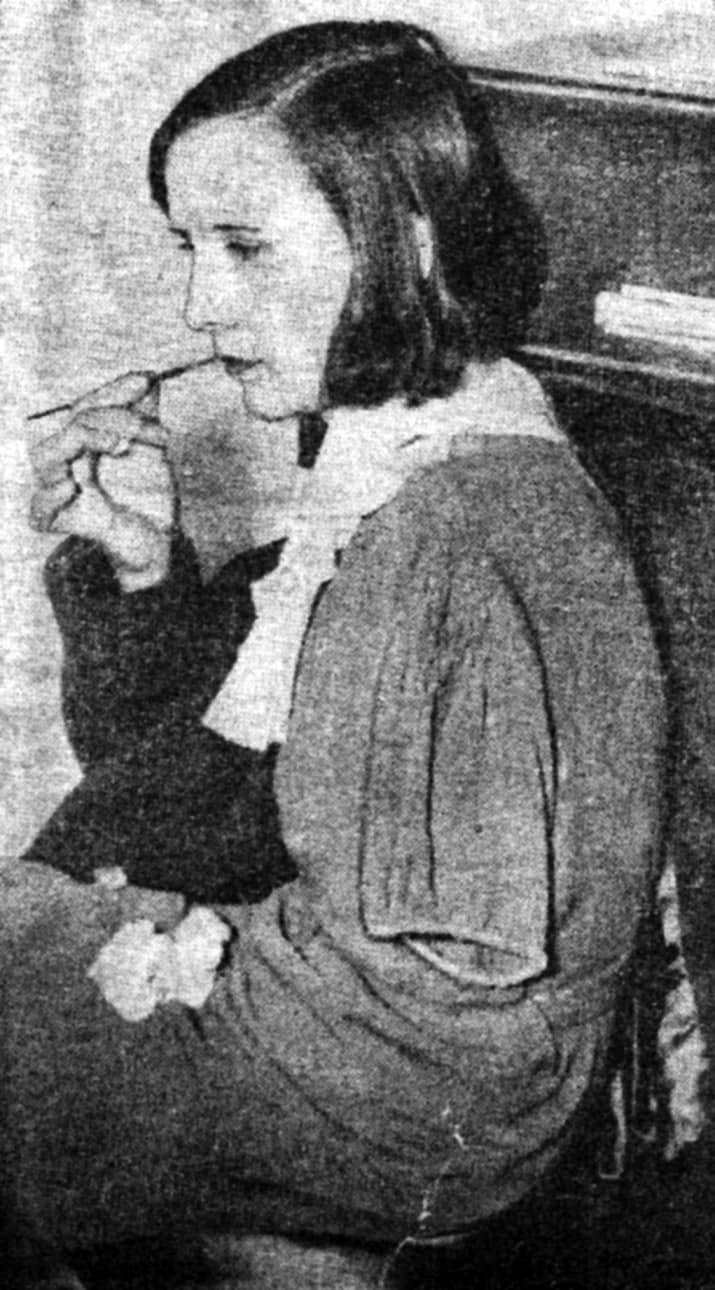

Then Leonard Grossman choose to represent the women. He had marched with suffragettes on Washington and was a great orator while his charity, his son said, extended to even occasionally taking items like shoes as fees. Catherine Donohue wrote “he had no thought of money” just wanting to help the girls. The second trial through the commission which was meant to begin on Friday the 23rd of July two days later, but Grossman had it postponed until February 10th 1938 to prepare the fight. Evidence was gathered from Catherine by Dr. Loffler, Dr. Weiner and Dentist Dalitsch with Weiner saying she seemed ancient and emancipated at only 71 pounds and Dalitsch noting her lower jawbones were completely destroyed. As Moore discusses Grossman highlighted Catherine’s lifesaving actions for serving men during WW1 and what a terrible cost it had had on her. A debt was owed. During the three doctors’ testimonies it became clear from Dalitsch that her condition was terminal, something she did not know, leading to her collapsing in court. Catherine was taken off to rest and it was agreed that she would continue to give her testimony from the bedside on the 11th the next day…if she was still alive that is. Thankfully she was. With her comrades like Pearl Payne, the Glacinski sisters, Olive Witt and Helen Munch around her she testified and showed how one did the lip-pointing.
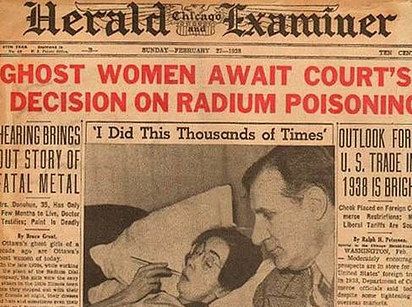
February 26th 1938 saw the women creating a group to fight for legislation on behalf of those endangered by occupation disease with Tom representing the increasingly ill Catherine. Then on April 5th the results of the trial came in five days early. It was decided her disability was caused by her work and that Radium Dial was responsible. Radium Dial continued to attempt to appeal and fight the decision with Catherine soon dying on Wednesday the 27th 1938 at a tiny 4.2 stone. Her inquest found Radium Dial guilty too with her funeral having hundreds of attendees on the 29th. Finally, the Supreme Court ruled that Radium Dial was guilty and no appeals could continue. Catherine had finally won for the Radium Girls even if she couldn’t experience the victory herself.
Legacy
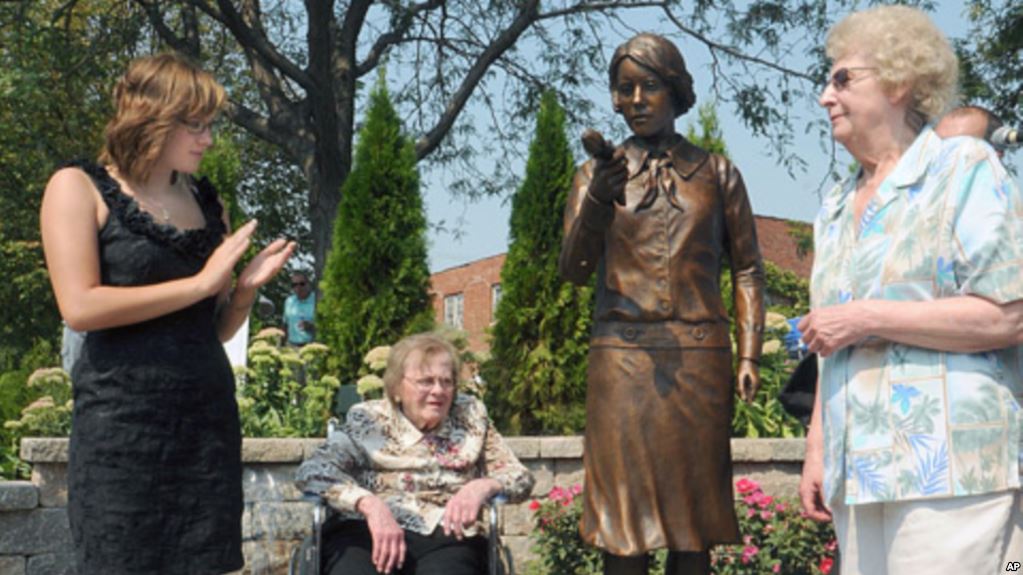
It had taken until the outbreak of WW2 for true justice to be reached for Radium Girls in these two states. Their tragedy Moore writes helped ensure the protection of workers during the war effort working with such material even within the Manhattan Project. In a new age of atoms, the women who survived and grew older than their sisters were studied and their bones collected upon death.
All of the Radium Girls, who Moore records the tales of, and those in other American locations are tragic figures, but as she shows they also shine out from the past even today as much as their bones which will glow for centuries to come. These working class girls endured death sentences for simply be attracted to a job that had been painted as a glamorous role for the modern new working girls of their roaring time. Fighting against behemoths of business and capitalism who saw the importance of the working class girls’ lives as equally minuscule to the trace amounts of radium killing them these women united. It took time for confusing results and findings by different experts to come together and make clear what was happening to the women, but when it did it was through the goodwill of those like Berry and Grossman and the sheer bravery and sense of purpose that every single surviving woman embodied making justice possible. Through the fight of those like Grace Fryer and Katherine Schaub in New Jersey the later warrior women such as Catherine secured justice for them all even while she lay staring death in the face upon her bed and sofa. Moore’s book shows the warriors and saviours of countless works that followed, but also the lives these women and girls led and often lost due to their legacy. Moore has helped secure that all these women will be remembered for a long time… This is both a masterful history of radium poisoning and the radium Girls and a biography that finally tells the stories of the women behind that name.

4 replies on “Radium Girls: The Dark Story of America’s Shining Women by Kate Moore.”
My dental hygienist recommended that I read The Radium Girls by Kate Moore. I bought the book on Amazon and could not put it down. How tragic these young women lost their lives and had to live in pain and suffering for such a long time. I definitely recommend this book and see what laws are in place now to protect people from hazardous conditions. I definitely recommend this book.
I think a film should be made about these women and their bravery
Netflix just released a movie called “Radium Girls”, it does not portray these women specifically but it has two fictitious sisters portraying the plight of the watch dial painters.
There is a film. I just watched it and it was excellent. It’s called Radium Girls